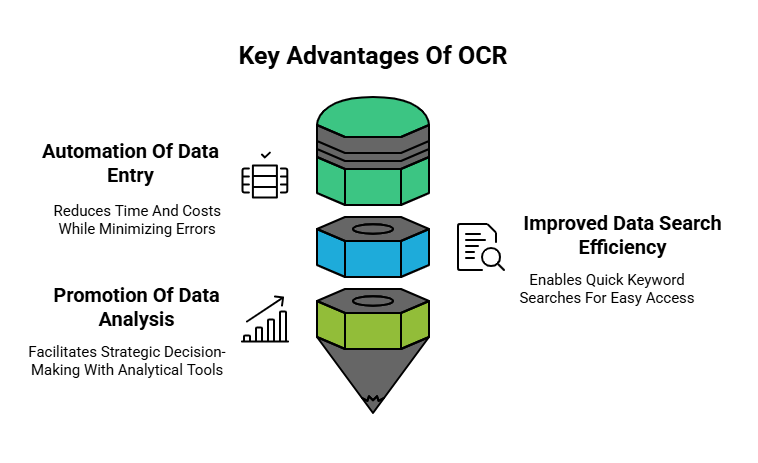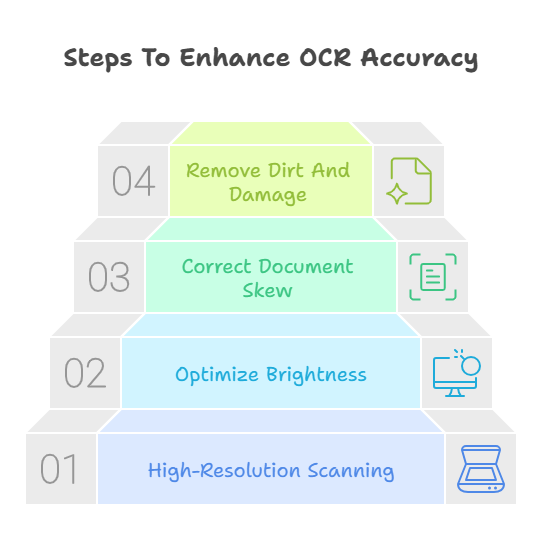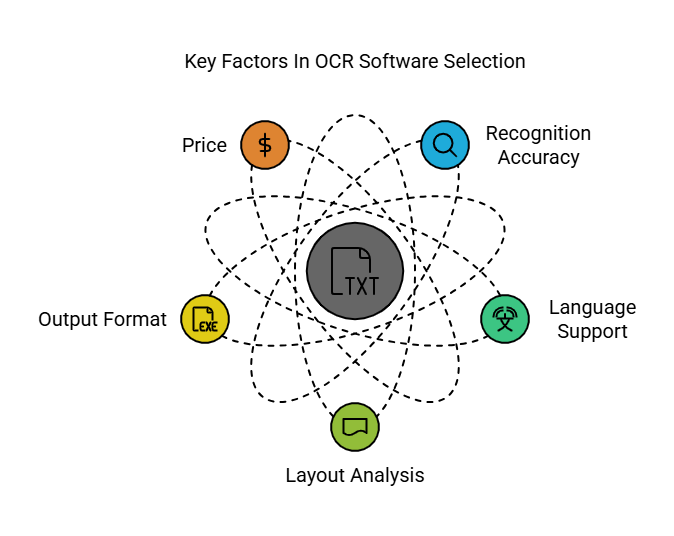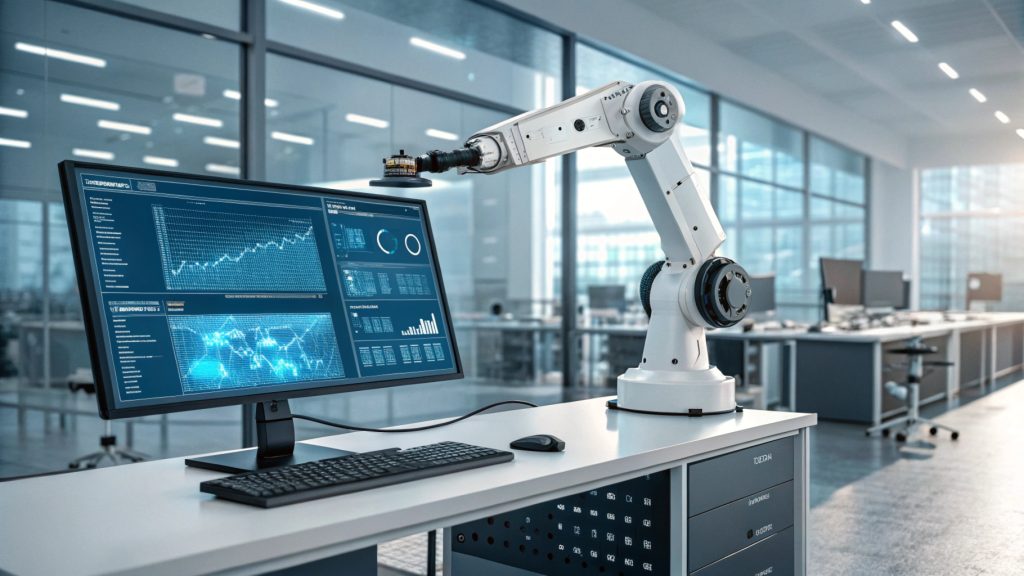
Hello, I am Kakeya, the representative of Scuti.
Our company specializes in services such as offshore development and lab-type development in Vietnam, as well as generative AI consulting. Recently, we have been fortunate to receive numerous requests for system development in collaboration with generative AI.
Do You Struggle with OCR Accuracy? Have you ever felt that your OCR system does not achieve the expected accuracy, despite its implementation? Many OCR users face challenges such as “not getting the desired accuracy” or “spending too much time on manual corrections”.
OCR accuracy is influenced by various factors, including the type of documents being processed, scan quality, and the software used.
In this article, we will break down the specific factors that impact OCR accuracy and introduce practical methods to improve it. We will also provide expert solutions for handling complex layouts, handwritten text, and special characters, which are often difficult for OCR to process.
What is OCR? Its Mechanism and Importance

If you want to learn more about AI OCR, be sure to check out this article first.
Related article: What is AI OCR? A Detailed Explanation of the Latest Technology and Industry Use Cases
Basic Knowledge of OCR: Mechanism and Accuracy
OCR stands for Optical Character Recognition, a technology that extracts textual information from images and scanned documents and converts it into digital text. The mechanism of OCR is based mainly on two algorithms: pattern recognition and feature recognition.
Pattern recognition is a method in which OCR software compares characters in documents or images with pre-learned text samples to recognize them. This method identifies characters by comparing them with known character patterns.
Feature recognition, on the other hand, analyzes specific characteristics such as lines and curves that make up characters and recognizes them based on these feature patterns. The accuracy of OCR is influenced by various factors, including the performance of the software used, the quality of the document, the type of font, and the size of the characters. Achieving high-precision OCR requires a comprehensive consideration of these factors and the optimization of the environment and settings.
Furthermore, OCR technology has evolved to recognize handwritten characters and special symbols, making software selection an essential factor in improving accuracy. Looking back at the history of OCR, early OCR technology was limited to specific fonts and character sizes. However, with the advancement of AI technology, it has now become possible to recognize a wider variety of fonts and handwritten characters.
Importance of OCR: Business Efficiency and Data Utilization
OCR is an essential technology that enables significant efficiency improvements and data utilization in various business operations. Below are some key advantages of OCR.
- Automation of Data Entry: OCR automates data entry tasks, significantly reducing time and costs associated with manual data input. This also minimizes human errors and improves data accuracy.
- Improved Data Search Efficiency: Digitalized text allows for keyword searches, enabling users to quickly find the necessary information. This makes organizing and accessing information much easier.
- Promotion of Data Analysis: OCR-converted digital data can be used with various analytical tools, aiding business decision-making. The integration and analysis of data become easier, leading to strategic utilization.
Due to these advantages, OCR is widely used as a crucial tool to innovate business processes and enhance competitiveness for companies and organizations. Additionally, by digitizing paper-based information through OCR, organizations can enjoy additional benefits such as reducing physical storage space and facilitating information backup.
A real-world example of OCR implementation is seen in financial institutions, where it is used to quickly digitize large volumes of documents, thereby improving the efficiency of customer information management.

Factors Affecting OCR Accuracy

Document Quality: The Condition of Printed Materials Affecting OCR Accuracy
The accuracy of OCR is significantly influenced by the quality of the scanned document. Below is a detailed explanation of specific factors related to document quality and their impact.
- Resolution: Low-resolution images cause text to appear blurry, making it difficult for OCR software to accurately recognize characters. Generally, scanning at a high resolution of 300 dpi or more is recommended. High-resolution images capture fine details of characters more clearly, improving recognition accuracy.
- Brightness: If the brightness settings during scanning are inappropriate, the text may appear too dark or, conversely, overexposed and difficult to read. Proper brightness adjustment ensures that characters are clearly visible, enhancing OCR accuracy.
- Skewing: If a document is tilted during scanning, OCR software may struggle to recognize text correctly. It is crucial to properly align the document before scanning and utilize automatic skew correction features afterward.
- Dirt and Damage: Stains or physical damage on the document can prevent OCR from accurately recognizing characters. Keeping the document as clean as possible and removing dirt or damage before scanning can significantly improve recognition accuracy.
By improving these factors, it is possible to significantly enhance the accuracy of OCR.
Character Types and Layout: Impact on OCR Recognition Accuracy
The accuracy of OCR is significantly influenced by the types of characters and the layout within a document. Below is a detailed explanation of specific factors related to character types and layout, along with their impact.
OCR software is optimized for standard fonts, but recognition accuracy may decrease for decorative or unusual fonts. Generally, standard fonts such as serif (e.g., Times New Roman) and sans-serif (e.g., Arial) are the easiest for OCR to recognize.
Handwriting varies significantly among individuals, and cursive or distorted handwriting can be particularly difficult for OCR to recognize. To improve the accuracy of handwriting recognition, maintaining uniformity and readability is essential.
Many OCR software programs are specifically developed for certain languages, meaning that documents in unsupported languages may experience reduced recognition accuracy. Choosing OCR software with multilingual support can help mitigate this issue.
Documents with complex layouts, such as those containing tables, graphs, or images, can be challenging for OCR software to process accurately. The more structured and organized a document’s layout is, the higher the OCR accuracy.
Special Characters and Symbols: Challenges in OCR Recognition
OCR excels at recognizing standard alphanumeric characters but may encounter difficulties when processing special characters and symbols. Below is a detailed explanation of specific factors related to special characters and symbols and their impact on OCR accuracy.
Mathematical symbols and equations have distinct shapes compared to regular alphanumeric characters, making it challenging for OCR to recognize them accurately.
Currency symbols (e.g., ¥, $, €) may not always be recognized as part of the text, leading to potential misinterpretations.
Other symbols, such as copyright marks (©) and registered trademarks (®), can also be difficult for OCR to process correctly.
To accurately recognize these special characters and symbols, it is necessary to carefully select and configure the OCR software, and in some cases, make corrections during post-processing.
OCR Software Performance: Algorithms and Features That Affect Accuracy
The accuracy of OCR largely depends on the performance of the software being used. Below is a detailed explanation of specific factors related to OCR software performance and their impact.
Recognition algorithms vary among OCR software, and their performance depends on the accuracy of these algorithms. Modern AI-powered algorithms often achieve higher recognition accuracy compared to traditional ones.
Language support is another crucial factor, as some OCR software has limited language compatibility. If a language is not supported, the accuracy of recognizing documents in that language decreases. Choosing software with multilingual support can help improve accuracy.
Layout analysis functionality is essential for recognizing complex documents with tables, graphs, and structured layouts. OCR software with advanced layout analysis can maintain high accuracy even with intricate document structures.
Learning capabilities are also an important feature in some OCR software, allowing the software to learn from user corrections and improve recognition accuracy over time. This feature enhances precision when working with specific documents and fonts.
Understanding these differences in features and algorithms and selecting OCR software that aligns with specific needs is crucial for maximizing OCR accuracy.
Specific Methods to Improve OCR Accuracy

Improving Scan Quality: The First Step to Achieving High-Precision OCR
To enhance OCR accuracy, the first step is to improve scan quality. Below are specific methods to achieve better scan quality.
Using a high-resolution scanner is essential. By using a scanner capable of scanning at 300 dpi or higher, text details can be captured clearly, improving OCR recognition accuracy. Low resolution can cause text to appear blurry, leading to recognition errors.
Adjusting brightness settings properly is also crucial. The scanner’s brightness settings should be optimized so that text appears clearly. If the brightness is too high or too low, OCR accuracy may decrease, so setting the optimal brightness is essential.
Correcting document skew is another key factor. Ensure that documents are properly aligned before scanning to prevent tilting. Many scanners come with an automatic skew correction feature, which can be utilized to enhance recognition accuracy.
Removing dirt and damage from documents is also important. Before scanning, remove as much dirt or damage as possible. If the document is severely damaged, consider using image editing software to clean up the scanned image afterward.
By implementing these measures, scan quality can be improved, taking the first step toward achieving higher OCR accuracy.

Image Preprocessing: Image Adjustments to Improve OCR Accuracy
Performing preprocessing on scanned images can further enhance OCR accuracy. Below are methods for image preprocessing to improve OCR precision.
Noise removal eliminates unwanted noise from images, improving text recognition accuracy. Various filters, such as median filters and Gaussian filters, are used for noise reduction. When an image contains excessive noise, text recognition becomes difficult, so appropriate filtering is necessary.
Contrast adjustment enhances text readability by modifying the contrast between text and background. This can be achieved through appropriate brightness and contrast settings or histogram equalization. High-contrast images improve OCR recognition accuracy.
Binarization converts images into black-and-white, improving text recognition accuracy. Methods such as threshold processing help clearly separate text from the background, making OCR recognition easier.
By properly performing these preprocessing steps, it is possible to enhance image quality and improve OCR recognition accuracy.
Appropriate Selection of OCR Software: Functions and Performance Suitable for the Purpose
To maximize OCR accuracy, it is important to choose OCR software that matches the intended purpose. Below are key points to consider when selecting OCR software.
Recognition accuracy varies depending on the OCR software. Refer to review sites and comparison articles to choose software with high recognition accuracy. In particular, it is crucial to check whether it supports handwritten text and special fonts.
Language support is essential; it is necessary to choose OCR software that supports the language of the documents being processed. Selecting software with multilingual support enables processing of documents in different languages.
The layout analysis function is useful when handling documents with complex layouts, such as tables and graphs. This function accurately recognizes document structures and extracts data appropriately.
The output format varies between OCR software, so it is important to choose software that supports the required formats (e.g., PDF, Word, Excel) to facilitate subsequent tasks.
Price is another consideration; OCR software is available at various price points, from free versions to paid options with advanced features. Select software that fits the budget while providing the necessary functions.
By considering these factors and choosing the most suitable OCR software for the intended purpose, it is possible to maximize OCR accuracy.

Manual Corrections: The Final Measure to Compensate for OCR Accuracy Limitations
OCR technology continues to advance daily, but achieving a 100% accuracy rate remains difficult. Therefore, manual corrections may be necessary after OCR processing. Below are specific methods for manual corrections. Misrecognition correction involves manually fixing characters or words that OCR has incorrectly recognized. Special characters and complex fonts are particularly prone to misrecognition, so extra caution is needed. Layout adjustment involves manually correcting layouts that have been disrupted by OCR processing. For complex layouts such as tables and graphs, it is crucial to verify and correct the proper positioning. Special character input is necessary when OCR fails to recognize special characters and symbols, requiring manual entry to complete the fully digitized text.
Manual corrections require time and effort, but they are an essential process to guarantee the accuracy of the final data. Establishing efficient correction methods and implementing strategies to reduce work time are necessary.
Limitations Of OCR And Future Prospects

Limitations of OCR: Challenges to Overcome
OCR is a powerful tool for streamlining various tasks, but it also has certain limitations. Below are some key challenges that OCR faces. Handwriting recognition is difficult because handwriting varies greatly among individuals, and cursive or distorted characters are particularly challenging for OCR to recognize accurately. Further advancements in technology are needed to improve handwriting recognition. Recognizing complex layouts is another challenge, as documents containing tables, graphs, and images can be difficult for OCR to process accurately. Automated layout analysis and appropriate data extraction are essential.
The impact of noise and stains can lower OCR recognition accuracy if the scanned image contains noise or stains. High-quality scanning and preprocessing are important, but in some cases, achieving ideal conditions may not be feasible. Lack of contextual understanding is another issue, as OCR can recognize individual characters but lacks the ability to understand context. This can result in recognition errors based on meaning or sentence structure.
To overcome these challenges, technological advancements along with the integration of AI and machine learning will be crucial.
Future of OCR: Evolution Through AI Technology
OCR is expected to evolve further with the advancement of AI technology. Below are the potential impacts of AI on OCR and future developments. AI-driven accuracy improvement will enhance recognition for handwriting and complex layouts by utilizing AI technology. Machine learning algorithms, by learning from vast amounts of data, will enable more advanced recognition.
Contextual understanding is expected to improve as OCR integrates AI technology, reducing recognition errors. By combining natural language processing (NLP) techniques, OCR will be able to recognize text more accurately based on context.
Advancements in automation will further streamline OCR processing through AI integration. Features such as automatic correction and real-time feedback will be implemented, reducing manual effort for users.
These technological innovations will continuously enhance OCR accuracy, expanding its applications across a wide range of fields.
Conclusion: Enhancing OCR Accuracy to Improve Workflow Efficiency

OCR accuracy is influenced by various factors, including document quality, character types, and software performance.
However, by improving scanning quality, preprocessing images, selecting appropriate software, and making manual corrections when necessary, it is possible to significantly enhance OCR accuracy. This leads to increased operational efficiency, cost reduction, and better data utilization, ultimately contributing to business growth. Moving forward, let’s continue to maximize OCR accuracy in line with technological advancements and utilize it effectively.
